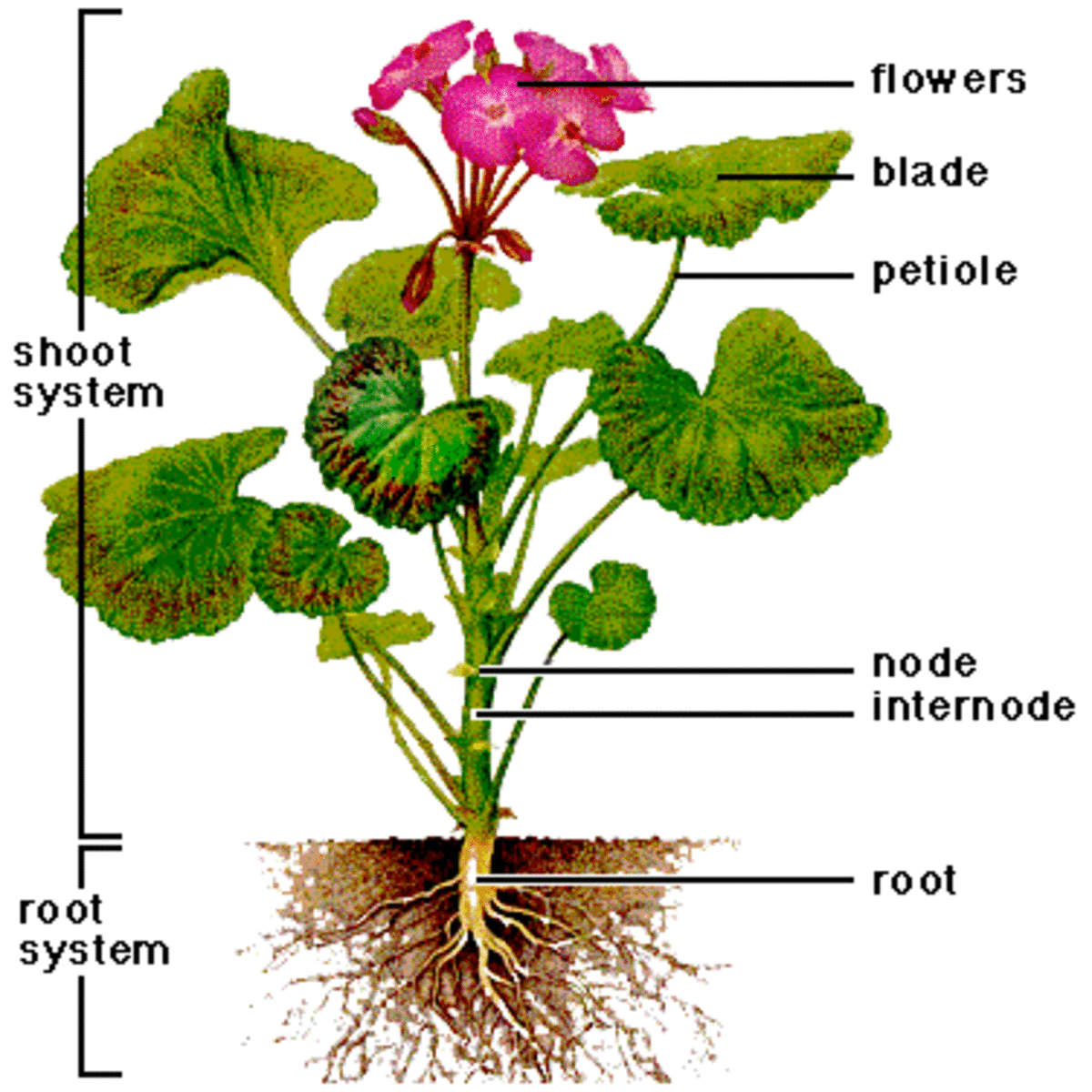Ideas for Teaching ESL Students in Mainstreamed Classes
What is ESL Education?
ESL means English as a Second Language. This refers to people for whom English is not their mother tongue, and who are living in a society where English is the language of the mainstream community around them. They may be immigrants, children of immigrants whose families speak their native language at home and international students who come to English-speaking countries to polish their business English or complete their education. The term is sometimes misleading, for in many cases, it's not a second language, but a third or fourth language, and that is why ESL may also be referred to as ESAL, English as a Second or Additional Language. In English-speaking countries like USA, UK, Australia, and Canada, with high rates of immigration, large numbers of ESL students in classrooms are having a significant impact on the public school system.
In British Columbia, Canada, for example, in 2011, 57,991 B.C. students, or 10 per cent of the entire student population, were ESL students, according to a 2006 article from the Vancouver Sun Newspaper. School districts receive an extra $1,100 from the B.C. Ministry of Education for each ESL student enrolled in their districts. As domestic birth rates remain stable or decline, most of Canada's population increase comes from immigration.
ESL students around the world come from varied backgrounds. Some, especially Mandarin speakers from Taiwan and China, come from cultures with a tradition of valuing education and schooling. In some cases the families are affluent and the home life and family expectations create structure and support for the students to do well at school. Others are refugees and may be traumatized by war. Some have lost their families; some are boat people; some are orphans. Some have never learned to read and write in their own culture and language. These students need a lot of help in the class, and the teacher cannot always give them the help they really need, while still teaching the other 30-odd students in the class.
Three Largest Cities in Canada
Immigrants and international students to English-speaking Canada come mainly to Vancouver and Toronto. In Montreal, they learn French.
Does your family speak a language other than English at home?
Does this picture sound like what is happening is large urban centers in your country? In Vancouver, the largest city in western Canada, with a population of over 2 million, the Vancouver School Board website reports that:
- 25% of K-Grade 12 students are designated ESL
- 60% speak a language other than English at home
- 126 languages have been identified in Vancouver schools
If you answered "yes" to the question above, which continent did your family come from?
In his new book English-only Instruction and Immigrant Studies in Secondary Schools: A Critical Examination (2011), Dr. Lee Gunderson of the Language and Literacy Education Department of the University of British Columbia reports his findings from a longitudinal study in Vancouver high schools between 2001 and 2006. This research showed that 65% of ESL students registered in provincially examinable academic courses in grade 8 were no longer registered by Grade 12. Although some of them took high school graduation credits in adult education programs later, Dr. Gunderson’s study concludes that 40% of these students drop out and never graduate from high school. This is a significant social problem that affects all of us, for without high school graduation, these people are more likely to work at low-paying jobs, pay fewer taxes and have less free time and resources to support their own children’s development and aspirations.

How Can Teachers Help ESL Students in Classrooms?
Here are some classroom management practices that can help ESL students cope in mainstreamed classes. Some are much larger tasks than one teacher can achieve alone, and require coordinating school-wide or community involvement.
1. Prepare the environment as a learning center where students can work at their own level in a structured ladder of tasks. As much as possible, post class material and assignments online, in Moodle or Google documents, for example, so students can access and practice as much as they can at their own pace.
2. Use pair work and small mixed-culture group activities. Students are more comfortable interacting in small groups where they don't feel so conspicuous. They ask questions, share ideas, solve problems and teach each other. Assign a mix of languages to each group, so the functional language has to be English, and the students can informally find out about each other's world views, life experience, and cultural background.
3. Depending on the age and level of your class, assign Show and Tell projects often and regularly. Have students practice presenting in pairs or to small groups, or both, before presenting in front of whole class.
4. Assign students to research a topic or teach a skill about what they know or where they are from, or what they know about their family tree or ancestor history.
5. Try some of these tips to strengthen your students' reading skills:
- Use Reading Buddies--native speakers listen to ESL, or sometimes to each other while teacher works with ESL groups and native speaker groups at various levels on a rotating basis.
- Assign novel study projects, with ESL students reading Penguin Simplified Readers at appropriate levels, while native speakers read grade-appropriate selected novels. I have written more about this here.
- Establish an Extensive Reading Project for all students to read extra curricular books from a selected list, and respond in some way--summary, book report, paragraph, creative writing response, visual arts response, or dramatization.
- Introduce a Silent Sustained Reading period, also known as Drop Everything and Read (DEAR), when for a period of 15 t0 30 minutes, depending on age and level, the whole class, including the teacher and any present parent volunteers, read silently in whatever text they choose.
6. Include parent volunteers in the classroom. Plan specific activities for them to do so they feel useful.
7. Start a classroom blog or website where everyone contributes written, photographic and video content. Sometimes students may be weak in language skills but strong in practical skills that are valuable sources of peer teaching. Here is an example of Grasslands Press, which one of my colleagues recently started with his advanced academic writing class.
8. Use information Gap Activities. As an example of this, half the class (native speakers) listen to a short video, then they pre-teach it to the ESL students, telling the ESL students what it's about, drawing sketches, drafting outlines, and introducing vocabulary. Then the whole class listens to the target video. Have it available in the learning center for all students to review and practice as required. Assign writing a summary, drawing a response, or preparing for a content test according to level of students and the subject of study.
9. Prepare a Class Performance--drama, choral reading, opera. According to your time line and the class's skills, students either write it themselves or prepare it from a story they know and like.
10. Read stories or a serial novel aloud to class, and assign response activities and small group discussion tasks.
11. Set up a homework club, learning center, or writing center after school where advanced students, older students, or community volunteers can get work experience helping ESL students complete homework. Many ESL students come from family backgrounds where there may not be a quiet study area or time at home. Many have jobs after school and on weekends, doing their best to support themselves or help their family pay bills. Many have no English-speaking adults at home who can give them guidance or structure if they need help with school work.
How Long Does It Take to Learn English as a Second Language?
- Students vary, and so do their backgrounds.
- Students who arrive in childhood and start learning English while young learn faster.
- Social students who take risks and talk to native speakers rather than staying mostly with their own language group learn faster.
- Students from families who value literacy and support school, homework, school rules and authority learn faster.
- Students who come from agricultural backgrounds, who are traumatized by war, who have lost parents and relatives, who have spent years in refugee or relocation camps, or who have spent little or no time in schools in their own country take longer.
Taking into account the factors above, usually outgoing students can speak and understand social English after about three years. However, academic English has more complex requirements for vocabulary, reading, writing and cultural competency, and takes 7 years or longer to approach mastery. I have observed from my own experience as an ESL and literacy teacher for nearly thirty years that even after 7 years of structured, academic study, there is usually evidence in an ESL writer's work that the author is not a native speaker.
What Can Students Do to Learn English as a Second Language?
High school and post-secondary students who are serious about completing their education in North American and graduating with competitive grades from high school and universities need to do whatever they can to help themselves and accelerate their language acquisition.
1. Speak, listen, read and write English everyday. Use the free public libraries, read newspapers, listen to TV and movies in English, talk to native speakers of English in the community. There are many free sites on the internet to practice these skills, and I have listed some of them here.
2. Mix with the community outside the comfort zone of your own cultural group. Get to know people, get to understand the culture, the history, the literature, the popular culture as well as the language.
3. Recognize the length of time it takes to learn academic English, and keep working at it.
4. Understand that in North American educational culture, much of the learning is self-practice and comes through self-study, research, doing projects and completing homework. Your work is not done for the day when the last class ends. Put in the time, and be patient when it takes you longer than it may take domestic classmates.
5. Hire a tutor who can help you with high level reading and writing, but do the work yourself. Teachers of a class of 30 students all with different needs cannot help each student individually the way a tutor can help you. Take responsibility for your own learning.
6. Keep a reading log, where you take notes of articles and books you have read, and review it.
7. Keep a vocabulary journal and add several new words to it every day. Keep reading, and learn new words from your reading. The English vocabulary is huge, and it keeps growing.
How Do Political Choices Affect ESL in Eduaction?
Given the impact large numbers of ESL students are having on the education systems of USA, Canada, UK and Australia, the task of teaching ESL students in mainstreamed classes effectively is huge. It requires coordinated effort and resources from within and from outside the schools. What do the school boards and governments in your district need to do?
The British Columbia Teachers Federation recognizes that teachers alone cannot solve the challenges these students face. Here are four recommendations from the Federation:
1. Dismiss the funding cap. Currently ESL students are allowed to study ESL for 5 years before language support is no longer funded for them. Target the funding, so it is used for ESL programs and not spent in the general budget.
2. Simplify the paperwork and auditing so ESL teachers can spend more time preparing classes and working with students rather than meeting complex requirements of bureaucracy.
3. Reduce caseloads so teachers have fewer ESL students in their mainstream classes. When as many as one-third of the class are not native speakers of English, it is difficult to teach the curriculum to the standard domestic students need, because so many of the class fall further and further behind due to insufficient language skills.
4. Allow second language academic credit for ESL learners, as domestic students get credit for beginner German, Spanish, French, Japanese or other languages for which curriculum has been determined. As it stands, many ESL students face pressure from their families and from themselves to "get out of ESL" and into academic mainstream classes even if their academic language skills make success unlikely.
How Can We Address the Challenges of Teaching ESL?
In many English-speaking countries, birth rates are stable or declining, and population growth is fuelled by immigration. Immigrants bring families whose children join the public schools. In addition, many international students join high schools and universities to learn English and earn academic credits and degrees that will help build their careers in their home countries. They all have a backstory. They bring with them a wealth of personal history and cultural information that has the potential of enriching the host countries' societies, schools and citizens. As much as they are students of English, they are teachers of the multi-cultural richness of wisdom and values that can become a foundation for civic dialogue in a global village.





